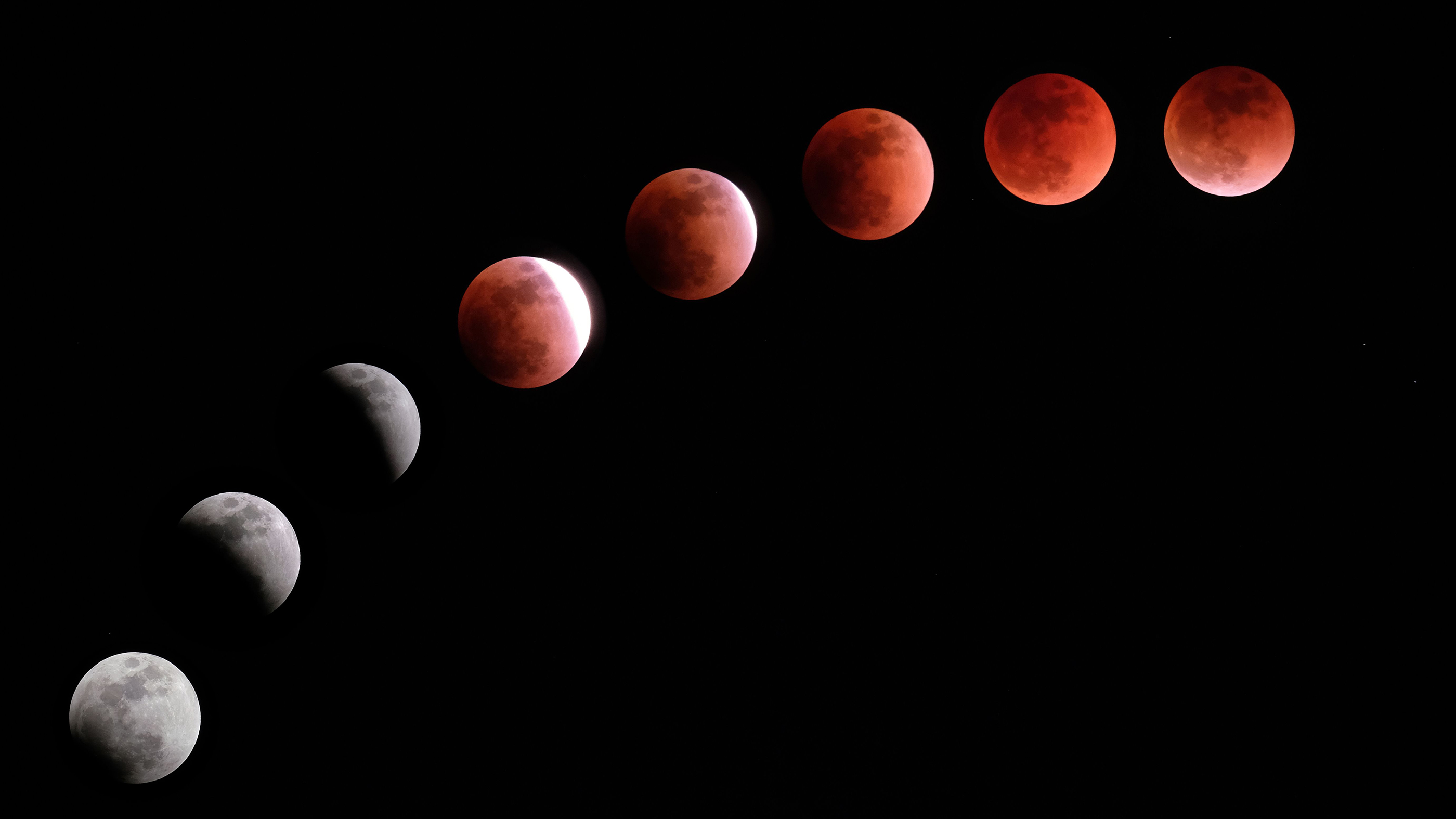Flower moon lunar eclipse rises this weekend: Everything you need to know
You can catch it in-person or online.

You can watch a lunar eclipse turn the Flower Moon red on May 15 or 16, depending on your location, and it's even broadcast online in case you can't see it in person.
This is going to be the first of only two lunar eclipses in 2022, and the only one visible to people in North America this year, so be sure not to miss what happens when the new moon passes into Earth's shadow.
Depending on where you stand, the eclipse might be total or penumbral; the latter happens when only the edge of the Earth's shadow falls over the moon. At least some of the fully eclipsed moon phase will be visible from portions of the Americas, Antarctica, Europe, Africa and the east Pacific, while those in New Zealand, Eastern Europe and the Middle East will be treated to the penumbral eclipse.
The partial eclipse officially begins May 15 at 10:28 p.m. EDT (0228 GMT on May 16), according to TimeandDate.com. The so-called Blood Moon (total phase) of the eclipse will peak at 12:11 a.m. EDT (0411 GMT), with the eclipse ending at 1:55 a.m. EDT (0555 GMT). The penumbral eclipse will begin and end roughly an hour after the partial eclipse.

Lunar eclipses are completely safe to watch with your naked eye or with binoculars or a telescope. Also unlike solar eclipses, they tend to last several hours, so you'll have plenty of time to enjoy the show. That said, if the weather is unpredictable or you can't easily view the eclipse in your area, there are webcasts available to assist.
NASA Science Live plans a YouTube broadcast starting at 9:32 p.m. EDT May 15 (0132 GMT May 16), which includes a live chat and a discussion about the agency's Artemis moon-landing program for astronauts.
Other YouTube broadcasts are available with astronomy webcaster Slooh starting at 9:30 p.m. EDT (May 16 0130 GMT), and with TimeandDate.com a half-hour later starting at 10 p.m. EDT May 15 (0200 GMT May 16). Slooh will broadcast the totality phase, before shifting to a members-only Discord channel, while TimeandDate.com plans to show the whole eclipse, weather permitting.
Get the world’s most fascinating discoveries delivered straight to your inbox.
The next and last lunar eclipse of 2022 will take place Nov. 8, 2022. It will be visible at least partially from Asia, Australia, North America, parts of northern and eastern Europe, the Arctic and most of South America.
Editor's Note: If you snap an amazing lunar eclipse photo and would like to share it with Live Science readers, send your photo(s), comments, and your name and location to community@livescience.com.
Follow Elizabeth Howell on Twitter @howellspace.

Elizabeth Howell was staff reporter at Space.com between 2022 and 2024 and a regular contributor to Live Science and Space.com between 2012 and 2022. Elizabeth's reporting includes multiple exclusives with the White House, speaking several times with the International Space Station, witnessing five human spaceflight launches on two continents, flying parabolic, working inside a spacesuit, and participating in a simulated Mars mission. Her latest book, "Why Am I Taller?" (ECW Press, 2022) is co-written with astronaut Dave Williams.


